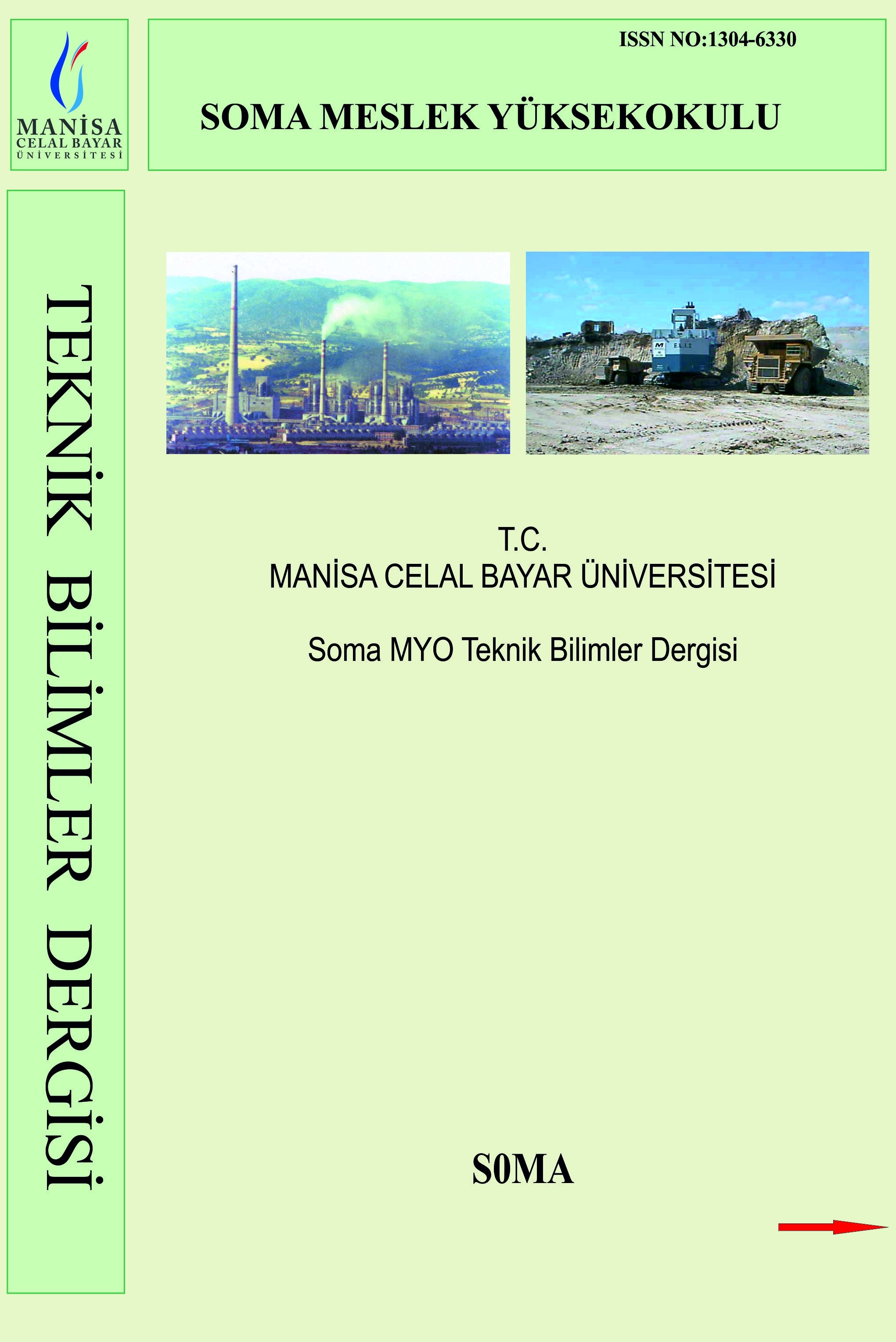BURDUR FAYININ ÇENDİK-YASSIGÜME SEGMENTİ ÜZERİNDEKİ PALEOSİSMOLOJİ ÇALIŞMASI İLK SONUÇLARI
Burdur, Deprem, Paleosismoloji, Fay, Segment
THE FIRST RESULTS OF PALEOSEISMOLOGICAL RESEARCH ON THE ÇENDİK-YASSIGÜME SEGMENT OF BURDUR FAULT
Burdur, Earthquake, Paleoseismology, Fault, Segment,
___
- Barka, A.A., Reilinger, R., Saroglu, F., ¸Sengör, A.M.C., 1995. The Isparta angle: its importance in the neotectonics of the eastern Mediterranean region., IESCA Proceedings, 1, 3–18.
- Barka, A. A., And Reilinger, R., 1997, Active tectonics of the Eastern Mediterranean region deduced from GPS, neotectonic and seismicity data, Annale de Geofisica, 40, 587-610.
- Barka, A.A., Reilinger, R., Emre, Ö., 2000, Active tectonics featuresof Western Anatolian: Some results of GPS measurement, International Earth Sciences Colloquium on the Aegean Region, Abstract, 9,İzmir.
- Blumenthal, M., 1960‐1963. Le system structural du Taurus sud‐Anatolien. In: Livre a mémoire de proffessor P. Fallot, Mem. Soc. Géol. France., 1, 2, 611,662
- Bozcu, M., Yağmurlu, F., Şentürk, M., 2007. Fethiye-Burdur Fay Zonunun Bazı Neotektonik ve Paleosismik Özellikleri (Güneybatı Anadolu). Jeoloji Mühendisleri Odası Dergisi, 31, 25-47.
- Brunn, J.H., Dumont, J.F., Graciansky, P, de: Gutnic, M. Juteau, T., Martoux, J., Monod, O ve Poisson, A., 1971. Outline of the Geology of the Western Taurids. In Geology and History of Turkey, Compbell (A.S. ed), Petrol Explor, Soci. Of Libya, Tripoli, 225 – 255
- Dumont, J.F., Uysal, Ş., Şimşek, Ş., Karamanderesi, I.H. ve Letouzey, J., 1979. Güneybatı Anadolu'daki Grabenlerin Oluşumu. MTA Dergisi, 97, p. 7-17.
- Ertunç, A., Karagüzel, R., Yağmurlu, F., Türker, A.E., Keskin, N., Bozcu, M., Yılmaz, K., Şentürk, M., Özçelik, M., Davraz, A., Yalçın, A., Soyarslan, İ., Kaya, M.A., Kamacı, Z., Uyanık, O., Balkaya, Ç., Duman, Y., Çimen,Ö., Uzundurukan, S., Karaca, Ö., Şener, E., 2001. Burdur Belediyesi Kent Merkezi ve Yakın Çevresinin Depremselliği ve Yerleşime Uygunluk Açısından İncelenmesi. Süleyman Demirel Üniversitesi Mühendislik-Mimarlık Fakültesi, Sonuç Raporu, (SDÜ AR-GE), 318s.
- ISSN: 1304-6330
- Başlangıç: 2004
- Yayıncı: Celal Bayar Üniversitesi
MANİSA İLİ SOMA İLÇESİ ORGANİZE SANAYİ BÖLGESİNİN İMAR PLANINA ESAS SAHA GÖZLEMLERİ
Aydemir ARSLAN, Deniz MAMUREKLİ, Fırat TEKİN, Erkan HAFIZOĞLU
Ayla TEKİN, Ümran ESENDEMİR, Ayşe ÖNDÜRÜCÜ
OCAK YANGINLARINDA KENDİLİĞİNDEN YANMANIN İŞ SAĞLIĞI VE GÜVENLİĞİ YÖNÜNDEN DEĞERLENDİRİLMESİ
BURDUR FAYININ ÇENDİK-YASSIGÜME SEGMENTİ ÜZERİNDEKİ PALEOSİSMOLOJİ ÇALIŞMASI İLK SONUÇLARI
